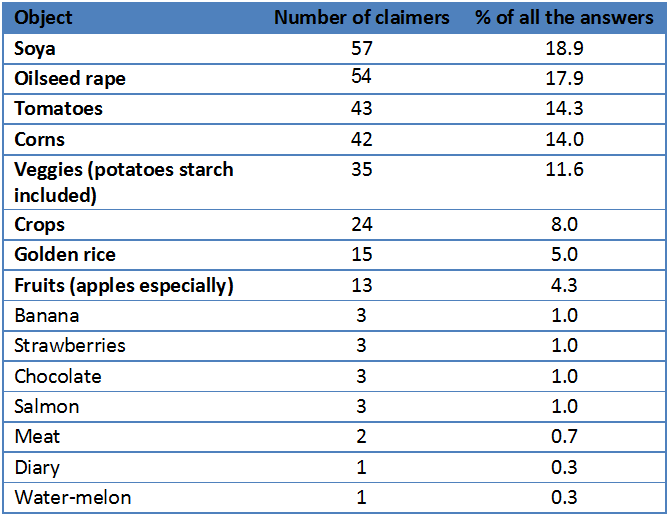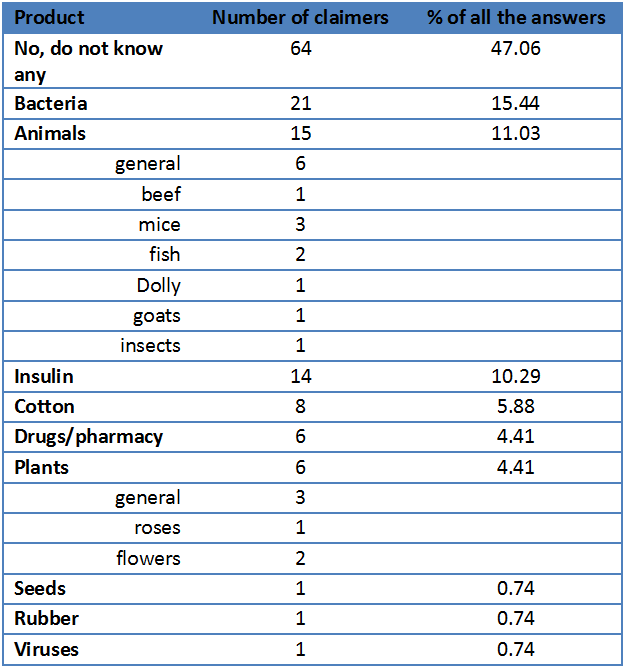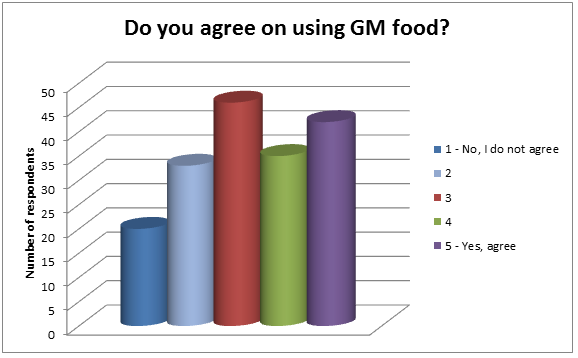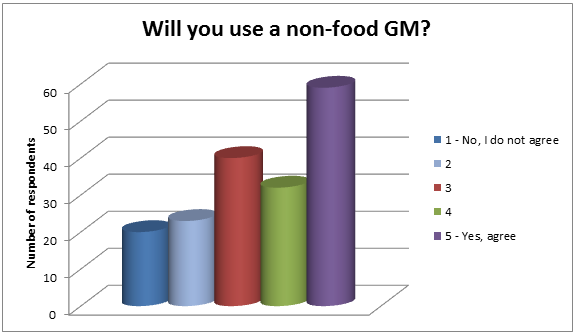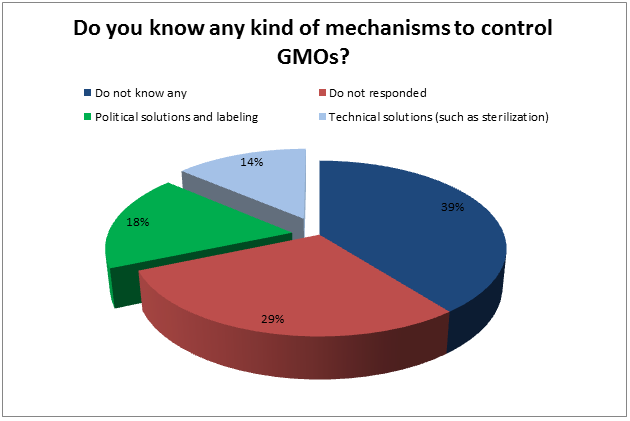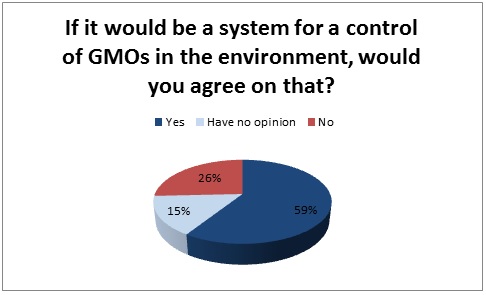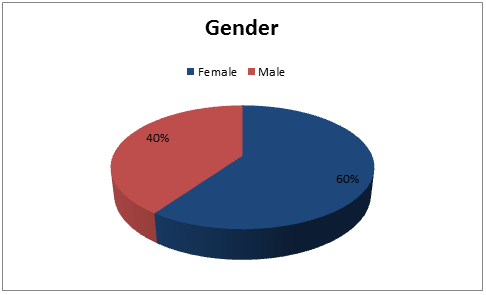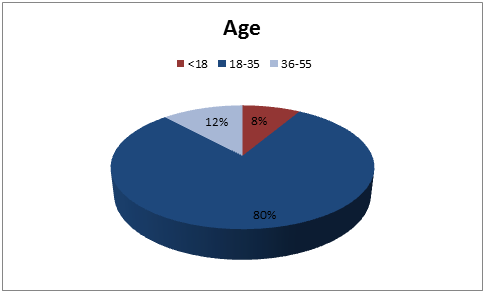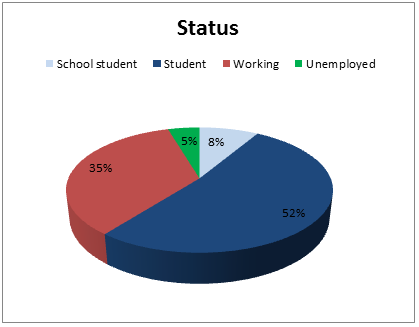Team:Vilnius-Lithuania/HumanPractices/Ethics
Ethics
Knowledge is power…
Knowledge is happiness
Our society is on the edge of a new age – genetical engineering age. Every experiment takes us one step further to the future. Biotechnology comes this fast, that we could call it a scientific revolution, aiming to solve many fundamental problems, such as various diseases (cancer, tuberculosis, AIDS, others), aiming to construct new biological design for a number of appliances, aiming to create a pathway to a better, novel kind of living. Revolutions in science happen everyday, but they do not come easily. Genetical engineering is not an exception.
GMOs are one of the most questionable topics of this kind in our everyday society. "New is bad” – we heard that saying for years. In addition to that, new and genetically engineered is just awful. There are two main reasons why one thinks like that. People are not only scared, because they do not know WHAT is this new thing. From our perspective, people are scared to talk about genetical modifications, because they do not know HOW they will affect us and our environment.
Our team does not intend to say that GMOs are 100 per cent safe. It is not our goal to promote the industries of GMO food. Even if we believe that it is safe, we are scientists, and scientists always trust evidences. Therefore, Vilnius iGEM team desires to light these topics in the society – we try to spread educational knowledge, start the discussions, force people to talk about it.
Ethics is a very important question of synthetic biology and we can not skip this so easily. From one point of view, humankind badly needs synthetic biology, because it gives us a chance to reach better life conditions – for instance, golden rice for food nutrients, insulin – for medical assurance and so on. We could think of many examples, when GMOs are beneficial. It can be applied to many fields, not only related with human. No one can deny the demand we have – we lived through the age of technology and reached the line, when technology alone is not sufficient enough to meet the set criteria.
In short, this is why synthetic biology is necessary for all people, including non-scientists. Above all that, when talking about the science itself, let’s remember that progress and development are quite autonomous from the given needs – science often develops in the name of development. Of course, we should not forget that discoveries and inventions not always lead to a better solution, but we can not stop the process of development just because we fear it.
It is always easy to not know. It is safer that way. But the most interesting things happens when you open the door of knowledge and step into the place you do not know. There all the magic happens. Knowing is happiness.
Survey
There is a fact that Lithuanian society is really unfamiliar with the biotechnological info, therefore most of the times it is strongly GMO-phobic. Our survey was dedicated to dig deeper and understand what do people really know and what they are the most afraid of.
We conducted our survey on the internet and analysed the results after. Here we show you the most principle situation of how GMOs are perceived in Lithuania based on around 200 answers we got.
Firstly, we asked what is GMO, that is, which of a few following statements best describe GMOs. The results in numbers are provided in a Table 1. We can see that the most GMO fearful possible answer is not the first one in range and only takes up about 10 per cents of respondents. On the other hand, even a less number (9 per cents) of respondents thought that it could help them to improve their lives. The answer which received the least number of claimers (7 per cent) is the one we think people should be more familiar with. GMOs are not only crops or mice – bacteria as well. In this case – there is always some kind of miscommunication. When scientists talk about GMO having in mind bacteria, people think that all the information they hear is about plants or animals.
Afterwards people were asked more precisely to name the GMOs which are used for food (Table 2). This time the respondents were really active and every one expressed their opinion and knew at least one of the products. Respondents mentioned over 20 different items (but some of them were not even food). As there is no law that validates the GMO usage for food in Lithuania, people still know the most popular ones. We divided the answers into two groups – the ones that are the best known for people and the others that were named seldom. Among these rarely mentioned answers there were some interesting answers, which are not very true. So the first sights of disinformation appeared.
Following the question about products of GMO, the next one was about products which are not used for food. This time people were less active, but some of respondents were really well informed and mentioned precisely the names of hormones or proteins produced by GMM. At least 30 of them did not provided any answer ant almost the same number indicated that they do now know any! This makes almost half of sample group not knowing GM not-food-related products. And this is where the problem about miscommunication arises again. Scientists are usually talking precisely about this type of production, while general public interprets their talk as if they were talking about food: soya, corns or tomatoes.
We are at least happy that about 10 per cent of respondents knew about the origin of insulin, as this fact was also the most astonishing for people during the presentations we made in public.
Let's move on. This time respondents were asked to check if they agree on using GM for food or using GMO non-food produced materials. They rated the acceptance on scale from 1 (which stands for no, I do not agree) to 5 (which stands for yes, I do agree). The answers were surprisingly positive. On average people would use GM food by the satisfaction number of 3.26, and GM non-food products with a little bit higher value of 3.49. Based on this data, we can claim that most of the society or at least half of it accepts the GM technology and advantage of them. But this smaller half is screaming loudly and forms the well-known opinion: people do not accept the GMOs. Furthermore – there is still a need for education to take a role. Even if those people are OK with GM products, they still do not have enough information to answer the other questions in this survey.
The next part in a survey was the most interesting and creative. People were asked to express the biggest fear of GMO they have. Among a lot of answers (this time almost every respondent had something to share) these ones were the most common and the others – the most “stunning”.
In a section “others” there were answers such as the lack of information, zombies or several times: the organisms with enhanced abilities will take over the world. Other groups were very equally shared among respondents. These 3 groups are: the spread of GMOs in the environment, unknown long-lasting effect for the offspring in the future and, finally, harm for the human health, such as cancer, gene mutations or imbalance of hormones or allergies for children. And we are happy to help to deal with the half of respondents fears: to educate them and to create a control system to handle the spread of GMOs to mother nature.
After indicating their fears and showing the knowledge they have – respondents were asked to draw their attention to the control mechanisms for GMOs. This straightly connected with our project, therefore it was really interesting for us. We grouped their answers into 4 different parts. A lot of them (almost one-third) did not even responded and nearly 40 per cent claimed that they do not know any! This partly indicates why GMO-phobia is such a huge thing. Knowledge about GMOs only reach a certain level, for example, people know what kind of organisms or products can be produced by GMOs. But almost 70 per cent of respondents could not indicate any mechanism to control GMOs. The rest of the answers can be easily grouped into two parts: technical and political solutions. Technical ones included the scientific methods to control them (such as sterilisation) or physical barriers for GM plants. We placed the answers such as laws, various institutions and labelling into political solutions and labelling section. These 2 parts divides the rest of 30 per cents to almost equal parts. This means that science as well as politics are important almost equally for the society to take responsibility of controlling GMOs. This is where we could put our collaboration with Ministry of Environment. We are creating a control mechanism for GM bacteria and they are taking a part in preparation of the main GMOs law, by asking our opinion, as well as some expert groups.
Following the question about how they are informed about mechanisms to control GMOs, we asked if one would be okay with using GMOs, if there was a control system. As we all know that, there are mechanisms to control them, and lots of them are used in a laboratory – but people are still not well informed. Therefore, our project at the very beginning of brainstorming for an idea was greatly influenced by this opinion of society. They need to have at least some control mechanisms near them, to make sure that they exists and they are effective. So as expected, most of the respondents agreed on that and almost 60 per cent put a tick on “Yes”.
Finally, we wanted to know who were the respondents and what kind of education they have. We kindly pleased our colleagues (people from the field of genetical engineering) not to actively involve in this survey. The people with at least BSc in Life sciences usually have the same opinion and know a lot of GMOs. We were particularly interested in ones that do not have this biotechnology background. Though the gender factor is usually not the crucial one in having opinion on GMOs, we are happy to have almost the same number of males and females. The fact that the most respondents were in a group of 18-35 years explains why this survey was quite surprisingly neutral and people were not possessed with GMO-phobia. It would be more interesting to gain the data from elder people, who are not familiar with the latest technologies and they are still working in our Parliament and ministries. This is the feedback we got from the department of GMO and environment control. This is why we will continue on educating not only the pupils in schools ( the results of survey prepared especially for them you can find here), but as well with members of groups who are accepting the laws and rules not only in Lithuania, but also internationally.
Opinions
"To be completely honest, I am not someone who knows much about genetically modified organisms, also known as GMO. My studies are the ones of a very different field and I never took my time to look into GMO. However, I would say that it is quite an interesting topic to talk or argue about, so I'll try my best to provide all the knowledge I have. For me "genetically modified" means that a product or its components were grown or made in an unnatural way, making the production time shorter or the lasting time longer. Regular customer finds these three letters either on a product packaging when they are grocery shopping, or in an articles, commercials, talkshows that we so often try to skip and find something not-so-scientific to read or watch. I would say that it is much easier to ignore GMO‘s existence: correct me if I'm wrong, but as far as I know, genetically modified products are cheaper and easier to find in stores, when healthier and all natural products are quite scarce. For the most part, I have to say that I am one of those regular customers who usually try to save some money and splurge every once in a while, so most of the time I buy products without looking what's written on the back.
However, I can say that by growing older I start to think about what I am eating more and every time I am in a shop and have some spare time, I try to compare some similar products and what they consist of. When I actually take my time and think about it more, I can find some pros and cons of the genetically modified products. The only good side of it and the main reason why it was started to use, I guess or should I say I hope, is that the human population is growing in a fast pace, so the natural way we used to grow vegetables, fruits, cereals or animals is not enough and too slow. On the other hand, GM is not only unhealthy for us as human beings, but also not safe for the environment we live in. Does anyone know how exactly it harms us and the environment? Is there any statistics? These are some of the questions I do not know the answer to. That is maybe because I have not looked into it too much or because we need more time to see how harmful it is and only our grandkids will suffer the real consequences and long-term effects. I really do hope that in the near future we will be more educated and willing to spend more time thinking about how GMO affects us and what surrounds us."
E. K.
"In my opinion, synthetic biology and genetically modified products are mainly overtaken by business, which uses science to make money. Companies, which buy products, do not care about the consumer, but only care about their own interests, which are often mistakenly presented to the society. In addition, even though scientists are working on these projects, but most of the time they do not know why and for what are they doing that, or how the product will be used. Companies, doing business out of GMOs, do not want to reveal their motives. I have noticed that scientists (especially the ones, that work with life sciences, such as synthetic biology) often go deep into details and loose the main point. They concentrate on question how to achieve something without even thinking if it really should be done."
D. J.
"I use Genetically modified organisms everyday at my work - from specific bacterial strains to mammalian lines that I modify myself. I appreciate the availability of GMOs because it opens doors to fast, more precise and less limited research. GMOs are also widely applied in agriculture and food industry. Although I am less aware of the impact of GMO in this field, I understand that changes made in species, which has been practiced for hundred years by cross hybridisation and selection for a specific trait, also allows increasing yield and efficiency of the product, make it more healthy or more appealing. Inevitably, GMOs integration into the wild life can bring concerns about the non-GMO plants, which could breed with the GMOs and create species that would not normally exist in the nature. I think this thought scares people the most due to unknown consequences of such breeding. Because of that GMO companies create species that cannot breed, which makes the farmers reliant on these companies, which could bring a potential for creating monopolies.
I think in country like Lithuania, which has a long history of agriculture, it brings a unique opportunity to make the most of its land using GMOs, however, it also brings problems that should be stringently controlled by the government (like inbreeding with local species) and the question is wether people are ready to deal with such type of problems. Also since no long-term effects of GMO food on human health have been researched, GMOs cannot be claimed to be hazardous-free and can bring strong opposition or even unproved claims of various health hazards of GMOs."
I. B.






